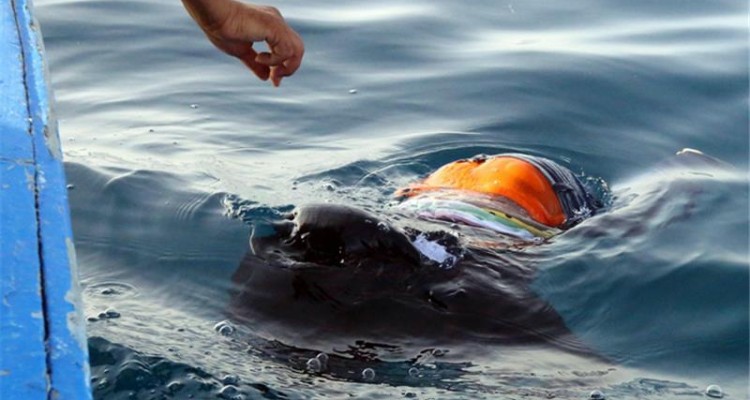As 400 migrants – including children – are feared to have died after a boat capsized off Libya, two days ago, I propose to examine the desperate journeys migrants are taking to reach Europe.
The boat, carrying about 550 migrants in total, overturned 24 hours after leaving the Libyan coast, according to some of the 150 survivors who were rescued. The survivors were mostly sub-Saharan Africans.
Officials say there has been a marked rise in the number of people trying to sail from the north African coast to Europe, with 8,500 rescued from the sea since Friday say the UN Refugee Agency (UNHCR).
With summer approaching, and the Mediterranean Sea warmer , over 500,000 people are waiting to set out from Libya, according to EU statistics. However, migrants are also using other sea routes to get to their destinations.
CENTRAL MEDITERRANEAN ROUTE
This is the name of the migratory flow coming from northern Africa towards Italy and Malta through the Mediterranean Sea. For years, this route has been an important entry point for illegal migrants to the EU, and in 2008, nearly 40,000 of them were detected.
These were mainly nationals from Tunisia, Nigeria, Somalia and Eritrea. In 2009 the Italian government signed an agreement with Gaddafi’s Libya, pledging to patrol the coastline, thus preventing this influx.
This changed in 2011/12 when the eruption of civil unrest in Tunisia and Libya in 2011 created a massive increase in the number of migrants along this route.
In 2014, more than 170,000 migrants arrived in Italy alone. Many migrants have come from Libya, where the lack of rule of law and basic law enforcement allow smuggling networks to thrive.
Syrians and Eritreans were the top two nationalities to have travelled to Italy by sea, but numerous Africans coming from Sub-Saharan regions also use this route.
The increasing number of migrants departing from northern Africa also led to an increase in the number of people who perished at sea.
PUGLIA AND CALABBRIA ROUTE
This route refers to illegal migration coming from Turkey and Egypt and also includes the migratory movements between Greece and Italy. The types of the vessels detected in the Ionian Sea are different from the ones used on other maritime borders – the smugglers tend to use yachts rather than fishing boats.
The smugglers on board the sailing boats are the only people visible while navigating and are sometimes accompanied by women in order to avoid attracting the attention of the patrolling authorities. All migrants tend to be hidden below deck in overcrowded conditions with insufficient ventilation.
WHY SO MANY?
The Middle East is in turmoil. People are escaping the atrocities of ISIS. The so-called Arab Spring has collapsed and previous despots have been replaced with chaos. Wars in Afghanistan and Iraq have added to the instability of the whole region. Many people, blighted by poverty, are simply seeking a better life. From a humanitarian point of view who can blame them?
WHAT ARE THE EFFECTS?
First, the deaths resulting from these perilous journeys constitute a human tragedy of Biblical proportions. Viewed from any perspective, we cannot conclude otherwise.
Second, Italy alone is on the front line of this mass movement of people. The tiny island of Lampedusa ( population 2,000 people cannot “process” these would- be immigrants to Europe, and neither can the larger island of Sicily. Italian ships patrolling the area have been responsible for saving many thousands from perishing at sea, yet have been unable to prevent innumerable deaths.
Third, the dream of this “better life” is seldom fulfilled. Far from being welcome, these immigrants usually find themselves employed in the most desperate of conditions, such as living in in plastic greenhouses joined to the vast areas of Southern Spain growing vegetables destined for the supermarkets of Northern Europe. EU regulations regarding pay and living conditions are completely ignored.
Europe is overcrowded. Europe cannot solve the ills of the world. Europe cannot finance medical aid, food or shelter for this vast number of people. Inability to fulfil the expectations of these people seeking a better life often leads to resentment, marginalisation and even radicalisation.
What is seldom addressed is another issue: what of the countries able young men abandon? Bereft of the very people who are needed to rebuild, a poor country quickly descends into further poverty and turmoil, and the vicious circle is never broken.
SOLUTION? I don’t have all the answers. However, this myth of a “better life” MUST be shattered. In order to address the real issues, we must first stem the flow of migration to Europe. The toothless EU has been dithering over this issue for years, and yet we have no unified policy. If it means ships must patrol the Mediterranean, rescue and return people to their place of origin, so be it.
Then we must rigorously pursue those who trade in human misery. Finally we must make restitution to those countries we have defiled, attacked or neglected. Only then will this “better life” become a possibility.




